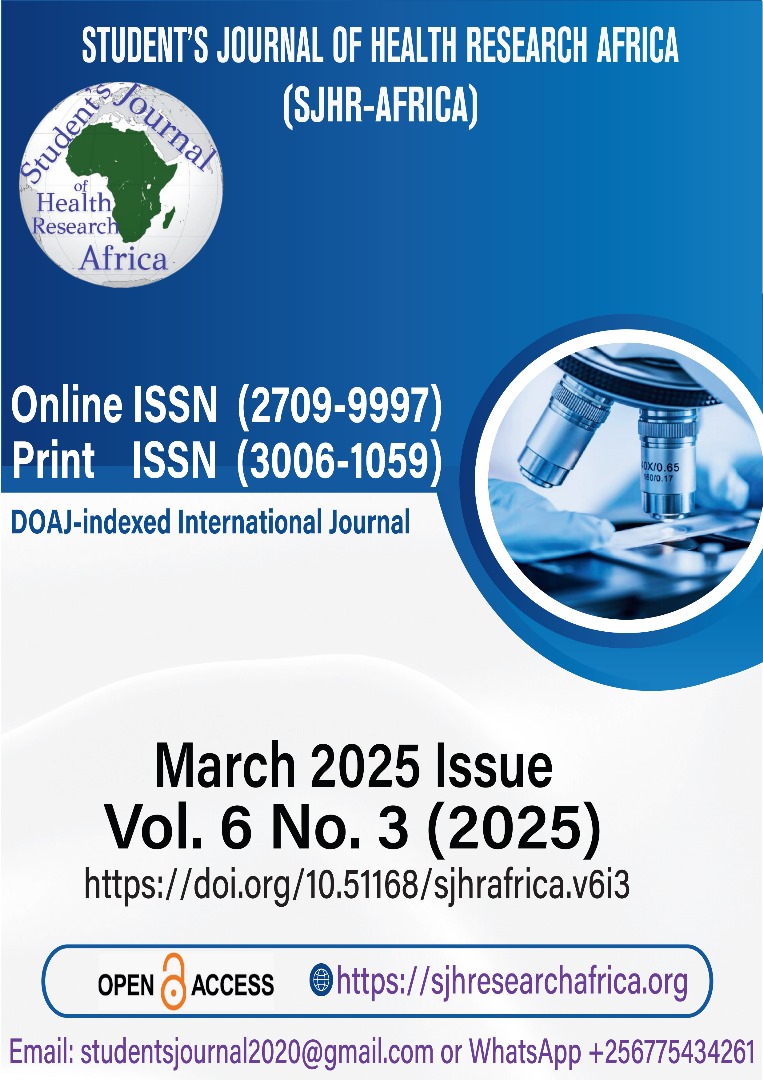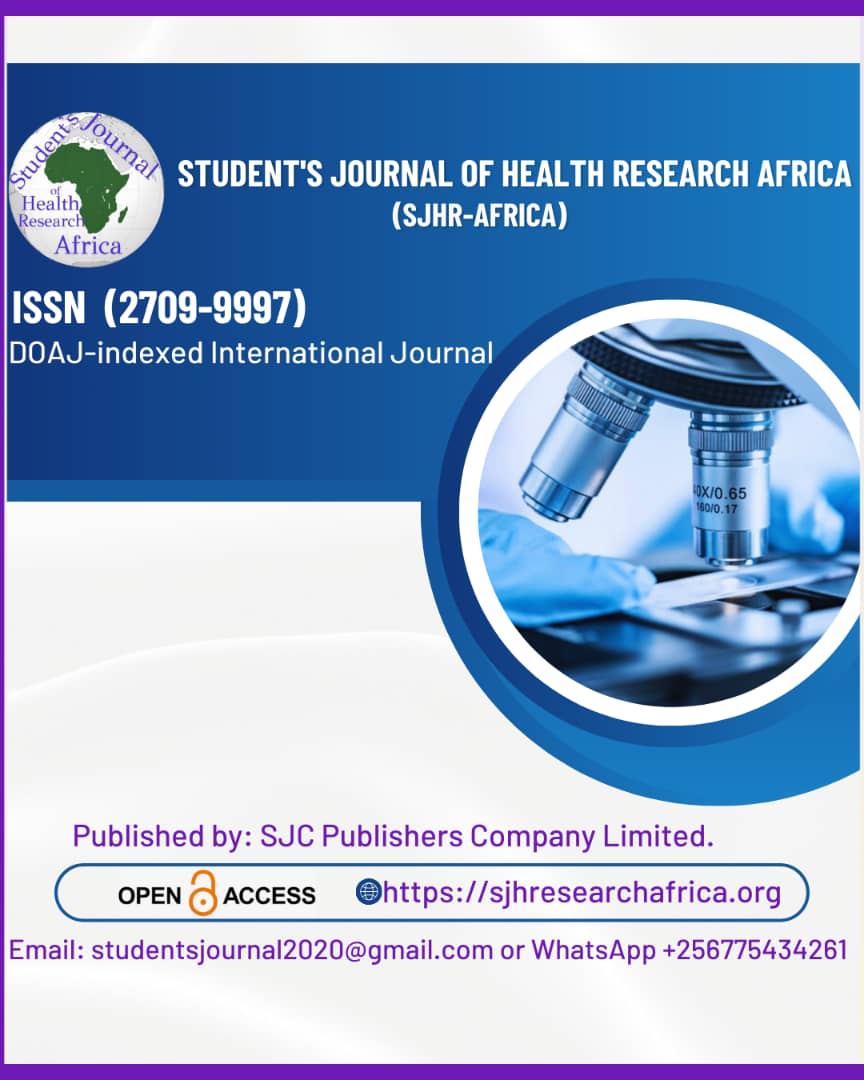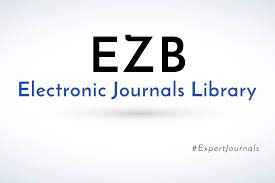SHORT WAVELENGTH AUTOMATED PERIMETRY CAN DETECT VISUAL FIELD CHANGES IN DIABETIC PATIENTS WITHOUT RETINOPATHY: AN OBSERVATIONAL STUDY
DOI:
https://doi.org/10.51168/sjhrafrica.v6i3.1593Keywords:
Short fluctuations, short wave automated perimetry, Non-Proliferative Diabetic Retinopathy, Mean DeviationAbstract
Background
The purpose of the research was to assess the efficacy of SAP and SWAP-blue on yellow in detecting several changes taking place in the retinal sensitivity of the visual field in diabetic patients either with retinopathy or without retinopathy.
Materials and methods
This study was carried out at IMS and SUM Hospital, Bhubaneswar. The study was conducted for six months. Participants in the research who do not provide consent are not allowed to participate. Overall, 120 participants were included in the study.
Results
The Average age of participants in group 1 was 51.2±6.8, while that of group 2 was 53.7±7.4. A statistically significant difference in the duration of diabetes was seen between groups 1 and 2, with a p-value of less than 0.0001. SAP and SWAP were shown to be statistically significantly correlated in groups 1 and 2, with mean deviation p-values of 0.001 and <0.0001, respectively.
Conclusion
It has been found that compared to people with clinical retinopathy, diabetic patients without overt retinopathy are more likely to have aberrant findings picked up by the SWAP approach.
Recommendation
We recommend SWAP because SITA SWAP will prove to be useful for the early detection of glaucomatous conversion.
References
Kobrin Klein BE. Overview of epidemiologic studies of diabetic retinopathy. Ophthalmic epidemiology. 2007 Jan 1;14(4):179-83. https://doi.org/10.1080/09286580701396720
Lee R, Wong TY, Sabanayagam C. Epidemiology of diabetic retinopathy, diabetic macular edema, and related vision loss. Eye and vision. 2015 Dec;2:1-25. https://doi.org/10.1186/s40662-015-0026-2
Yau JW, Rogers SL, Kawasaki R, Lamoureux EL, Kowalski JW, Bek T, Chen SJ, Dekker JM, Fletcher A, Granlund J, Haffner S. Global prevalence and major risk factors of diabetic retinopathy. Diabetes care. 2012 Mar 1;35(3):556-64. https://doi.org/10.2337/dc11-1909
Davis MD, Fisher MR, Gangnon RE, Barton F, Aiello LM, Chew EY, Ferris FL, Knatterud GL. Risk factors for high-risk proliferative diabetic retinopathy and severe visual loss: Early Treatment Diabetic Retinopathy Study Report# 18. Investigative ophthalmology & visual science. 1998 Feb 1;39(2):233-52.
Roy MS, Rick ME, Higgins KE, McCulloch JC. Retinal cotton-wool spots: an early finding in diabetic retinopathy? British journal of ophthalmology. 1986 Oct 1;70(10):772-8. https://doi.org/10.1136/bjo.70.10.772
Granite JH, Zumbansen HP, Adamczyk R. Visual field in diabetic retinopathy (DR). InFourth International Visual Field Symposium Bristol, April 13-16, 1980 1981 (pp. 25-32). Dordrecht: Springer Netherlands. https://doi.org/10.1007/978-94-009-8644-2_6
Bek T, Lund‐Andersen H. Accurate superimposition of perimetry data onto fundus photographs. Acta Ophthalmologica. 1990 Feb;68(1):11-8. https://doi.org/10.1111/j.1755-3768.1990.tb01642.x
Chee CK, Flanagan DW. Visual field loss with capillary non-perfusion in preproliferative and early proliferative diabetic retinopathy. British journal of ophthalmology. 1993 Nov 1;77(11):726-30. https://doi.org/10.1136/bjo.77.11.726
Buckley S, Jenkins L, Benjamin L. Field loss after pan-retinal photocoagulation with diode and argon lasers. Documenta ophthalmologica. 1992 Dec;82:317-22. https://doi.org/10.1007/BF00161019
Khosla PK, Gupta V, Tewari HK, Kumar A. Automated perimetric changes following pan-retinal photocoagulation in diabetic retinopathy. Ophthalmic Surgery, Lasers and Imaging Retina. 1993 Apr 1;24(4):256-61. https://doi.org/10.3928/1542-8877-19930401-07
Wisznia KI, Lieberman TW, Leopold IH. Visual fields in diabetic retinopathy. The British Journal of Ophthalmology. 1971 Mar;55(3):183. https://doi.org/10.1136/bjo.55.3.183
Agarwal M, Rani PK, Raman R, Narayanan R, Virmani A, Rajalakshmi R, Chandrashekhar S, Makkar BM, Agarwal S, Palanivelu MS, Srinivasa MN. Diabetic retinopathy screening guidelines for Physicians in India: a position statement by the Research Society for the Study of Diabetes in India (RSSDI) and the Vitreoretinal Society of India (VRSI)-2023. International Journal of Diabetes in Developing Countries. 2024 Mar;44(1):32-9. https://doi.org/10.1007/s13410-023-01296-z
Wild JM. Short wavelength automated perimetry. Acta Ophthalmologica Scandinavica. 2001 Dec;79(6):546-59. https://doi.org/10.1034/j.1600-0420.2001.790602.x
Midena E, Vujosevic S. Microperimetry in diabetic retinopathy. Saudi Journal of Ophthalmology. 2011 Apr 1;25(2):131-5. https://doi.org/10.1016/j.sjopt.2011.01.010
Kern TS, Berkowitz BA. Photoreceptors in diabetic retinopathy. Journal of diabetes investigation. 2015 Jul;6(4):371-80. https://doi.org/10.1111/jdi.12312
Demirel S, Johnson CA. Short wavelength automated perimetry (SWAP) in ophthalmic practice. Journal of the American Optometric Association. 1996 Aug 1;67(8):451-6.
Park CY, Park SE, Bae JC, Kim WJ, Park SW, Ha MM, Song SJ. Prevalence of and risk factors for diabetic retinopathy in Koreans with type II diabetes: baseline characteristics of Seoul Metropolitan City-Diabetes Prevention Program (SMC-DPP) participants. British journal of ophthalmology. 2012 Feb 1;96(2):151-5. https://doi.org/10.1136/bjo.2010.198275
Hohenstein B, Hugo CP, Hausknecht B, Boehmer KP, Riess RH, Schmieder RE. Analysis of NO-synthase expression and clinical risk factors in human diabetic nephropathy. Nephrology Dialysis Transplantation. 2008 Apr 1;23(4):1346-54. https://doi.org/10.1093/ndt/gfm797
Macky TA, Khater N, Al-Zamil MA, El Fishawy H, Soliman MM. Epidemiology of diabetic retinopathy in Egypt: a hospital-based study. Ophthalmic research. 2011 Aug 12;45(2):73-8. https://doi.org/10.1159/000314876
Zico OA, El-Shazly AA, Ahmed EE. Short wavelength automated perimetry can detect visual field changes in diabetic patients without retinopathy. Indian Journal of Ophthalmology. 2014 Apr 1;62(4):383-7. https://doi.org/10.4103/0301-4738.126986
Greenstein VC, Hood DC, Ritch R, Steinberger D, Carr RE. S (blue) cone pathway vulnerability in retinitis pigmentosa, diabetes, and glaucoma. Investigative ophthalmology & visual science. 1989 Aug 1;30(8):1732-7.
Lobefalo L, Verrotti A, Mastropasqua L, Della Loggia GI, Cherubini V, Morgese G, Gallenga PE, Chiarelli F. Blue-on-yellow and achromatic perimetry in diabetic children without retinopathy. Diabetes Care. 1998 Nov 1;21(11):2003-6. https://doi.org/10.2337/diacare.21.11.2003
Nomura R, Terasaki H, Hirose H, Miyake Y. Blue-on-yellow perimetry to evaluate S cone sensitivity in diabetics. Ophthalmic research. 2000 Apr 10;32(2-3):69-72. https://doi.org/10.1159/000055592
Afrashi F, Erakgün T, Köse S, Ardıç K, Menteş J. Blue-on-yellow perimetry versus achromatic perimetry in type 1 diabetes patients without retinopathy. Diabetes research and clinical practice. 2003 Jul 1;61(1):7-11. https://doi.org/10.1016/S0168-8227(03)00082-2
Abrishami M, Daneshvar R, Yaghubi Z. Short-wavelength automated perimetry in type I diabetic patients without retinal involvement: a test modification to decrease test duration. European Journal of Ophthalmology. 2012 Mar;22(2):203-9. https://doi.org/10.5301/EJO.2011.8364
Han Y, Adams AJ, Bearse MA, Schneck ME. Multifocal electroretinogram and short-wavelength automated perimetry measures in diabetic eyes with Little or no retinopathy. Archives of ophthalmology. 2004 Dec 1;122(12):1809-15. https://doi.org/10.1001/archopht.122.12.1809
Downloads
Published
How to Cite
Issue
Section
License
Copyright (c) 2025 Snehalata Dash, Lopamudra Beura

This work is licensed under a Creative Commons Attribution-NonCommercial-NoDerivatives 4.0 International License.






















